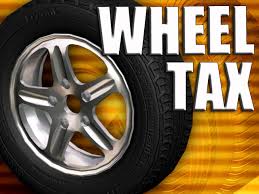The myths about the Shelby County Wheel Tax refuse to die.
In a column in the Tri-State Defender, Shelby County Commissioners Eddie S. Jones Jr. and Edmund Ford Jr. repeat one of the most durable ones: that the wheel tax was temporary.
They wrote: “The proposed budget by Mayor Harris has several questionable items. First it included a $16.50 increase in the wheel tax. Many of us remember that this tax was supposed to be temporary. Truth is, it still exists and has doubled from $25 to $50.”
Wrong.
It wasn’t positioned as temporary for a simple reason: it was paying off bonds for schools, roads, and The Med and that would take decades.
At any rate, here is an excerpt from a blog post from 2003 and wheel tax myths:
Myth 1: The wheel tax was only for schools.
Not even close, the primary purpose of the wheel tax was to create another source of funding for school construction at the time, but it was clearly stated that it was also for the Med and road construction.
Myth 2: The wheel tax was misused and misappropriated.
The bond documents at the time set out the sources and uses for the wheel tax. The precise amounts to be spent for schools, for The Med, and roads were set out for all bond sellers and purchasers to see. We believe that county government would have violated some law or regulation if it had then instead spent it for other uses, and the last time we checked, there was no such legal charge lodged against it.
Myth 3: The public was told that the wheel tax was only for schools.
Simply not true. Shelby County Government didn’t pass the wheel tax in the dead of night in a secret meeting in a darkened room. It passed it in a public meeting of county commissioners that was preceded by several public meetings in which the wheel tax was discussed. Also, for weeks before the vote, Shelby County distributed far and wide brochures that explained the tax, what it would be spent on, and the details about it.
Myth 4: The wheel tax was supposed to be for only one year.
This one is ridiculous on its face. The proceeds from the wheel tax were paying for more than $100 million in bonds for schools, The Med, and roads. It generated about $11-13 million a year in new revenues. The bond documents, the public brochures, and the legislative resolution all pointed out that the funds would be used to pay off bonds for 20 years.
Myth 5: The wheel tax was supposed to end.
At the time that the wheel tax was passed, then-Mayor Bill Morris and a majority of the legislative body agreed that they were only interested in it paying off the bonds being issued at the time. Of course, they were long gone when that day came, and the mayor and Shelby County Board of Commissioners at that time decided to use it for operations and to pay for more school debt, making the legal point that one board of commissioners cannot obligate another one in the future.
Myth 6: The wheel tax was to pay for air conditioning every city school.
No, it was said by school officials that with the funding, they could pay to air condition schools, but in keeping with state law, Shelby County Government had no ability to direct how the money would be spent.
Myth 7: Only Shelby County had a wheel tax.
Actually, Memphis and every municipality in Shelby County already had a wheel tax when county government passed it, but the municipalities were smart enough to steer clear of that dreaded moniker and apparently the words matter. The earliest wheel tax in Tennessee was enacted in Robertson County in 1947, and by the time Shelby County Government enacted one, the majority of Tennessee counties already had them.





Thanks Smart City for setting the record straight. There is no doubt there is a structural revenue problem left by 8 years of the fiscally liberal Luttrell administration. Seems that should be communicated by the Mayor and Shelby County Commissioners. And also, nice website upgrade !